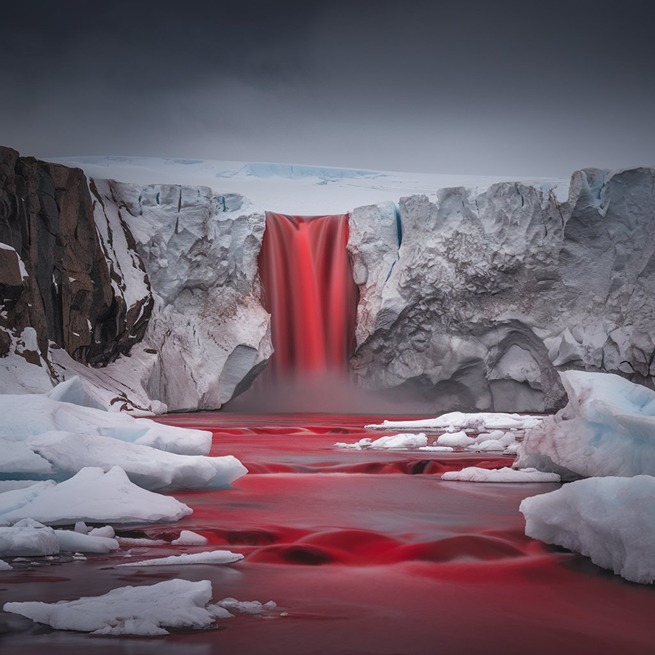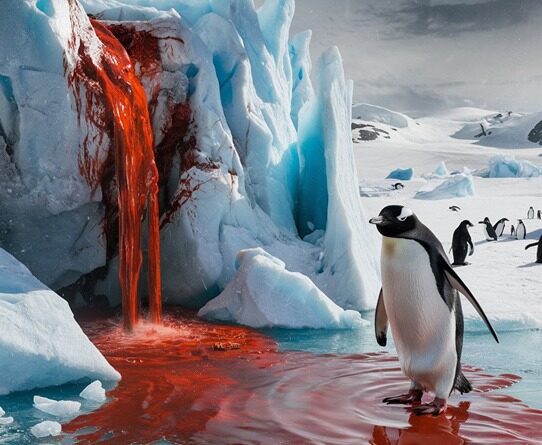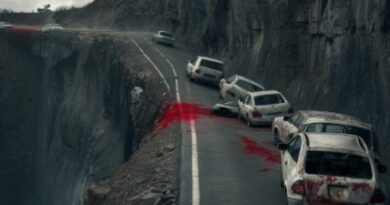Blood Falls In Antarctica Will Make You Freezing To Death
What needs to be done for a specific site on Earth to become scary? The answer is complex and, in many cases, related to its appearance. Think, for example, of nature, which sometimes receives the addition of “blood” – or at least something that looks similar in the bright red color. This is precisely the case of Blood Falls in Antarctica, which is so-called because of the red color of its water and some extreme conditions.
Over the years, many people have tried to understand what causes the unique phenomenon known as the Blood Falls in Antarctica. Today, the answer is known and includes a solid scientific basis related to iron and the continent’s unique (and hazardous) environmental conditions. Here are some Blood Falls facts to tell you what we are dealing with and what makes this place unique and captivating.
What Is Blood Falls In Antarctica?
Blood Falls is an exciting and unique natural phenomenon in the heart of the world’s most isolated and frozen continent. The scene here looks like it came out of a horror movie (you know, movies like “The Shining” or “Evil Dead Rise” where the artificial blood, in commercial quantities, takes over the frame). Those who come here see a waterfall of red water flowing over the white ice as if someone had stabbed the Blood Falls glacier, which earns it the unofficial nickname “The Bleeding Glacier.”
So, where is Blood Falls in Antarctica? Well, they are located in the Taylor Valley area, which is a fascinating place in itself. This area is one of the McMurdo Dry Valleys on the eastern side of Antarctica, one of the driest areas you will find on Earth. The falls originate from a glacier called Taylor Glacier, a glacier about 54 meters long discovered by the Discovery expedition at the beginning of the 20th century.
They Falls fall into Bonney, a saltwater lake covered with ice. It reaches a depth of about 40 meters, but between it and the person who is happy to stay out of the water separates – at least for now – a layer of ice about 4.5-3.5 meters thick. This whole process started a few million years ago, following the rise of seawater, which caused the flooding of the eastern side of Antarctica, the formation of the lake, and the remarkable phenomena associated with it.

💀 Killer Deals & Scary Recommendations 💀
🎭 Costumes & Accessories
HalloweenCostumes Fun Costumes Entertainment Earth
🛒 Online Shopping
AliExpress Amazon Walmart Etsy
🧛 Collectibles & Horror Brands
Funko Hot Topic Lego Spirit Halloween
🎢 Attractions & Tours
GetYourGuide Tiqets Viator Klook
📖 Blogs & Horror Sites
Bloody Disgusting iHorror Fangoria
🩸 Disclaimer: Some links are affiliate links. The price stays the same – it just helps keep the site alive 👻
When Was Blood Falls Discovered?
Over the years, quite a few researchers have tried to understand what makes the water of the Blood Falls in Antarctica red. The waterfall was first discovered in 1911 by an Australian geologist, Thomas Griffith Taylor, one of the survivors of the Terra Nova expedition that first explored the South Pole region.
When members of Taylor’s expedition arrived at the glacier, they tried to understand what they were seeing. Not only are the waterfalls, in general, quite rare on a frozen and desert continent like Antarctica, but the water’s red color is different from what they were familiar with.
Why Is Blood Falls Red?
It took more than a hundred years of testing and research to prove that the first significant theory regarding the color of the waterfall – which is that there is red algae in the water – is wrong. Even theories that might come up for some horror fans, such as water filled with blood as evidence of a gruesome range that took place in the haunted place or something like that, don’t hold water in reality, literally. To get an unequivocal answer about what gives Blood Falls in Antarctica its red tint, you need science and technology.
In 2006 and 2018, American scientists took samples from the glacier and analyzed them with the help of advanced microscopes, which show the development of research technology over time. The researchers noticed that the composition of the water includes nanospheres (spherical and hollow nanometer particles) with very impressive amounts of iron, along with other components such as aluminum, calcium, and sodium. When the water, with its unique composition, comes out of the glacier’s tongue and encounters from time to time oxygen, light rays, and heat (as far as you can find it in this part of the world), it oxidizes and turns red. Since the nanospheres are non-crystalline and, therefore, non-mineral, the previous samples based on less advanced means did not show satisfactory results.
Of course, the extreme natural conditions of the area also contribute to the unique phenomenon. Beneath the Taylor Glacier is an ancient lake of salt water, trapped beneath the ice for a very long period of millions of years, with no contact with the atmosphere at all. This lake is very salty – almost three times as much as “normal” seawater – and, due to the high amounts of salt, cannot completely freeze.
The ancient bacteria have adapted to the difficult conditions that prevail there, with total darkness, lack of exposure to oxygen, and a high concentration of salts, and they produce enzymes that are especially rich in iron. When this water reaches the surface through cracks in the glacier, it meets the oxygen in the air for the first time. The iron that melts in the water quickly goes through the oxidation process in a way reminiscent of the formation of rust.
Here is a short video from the Mystery HIstory Story channel that explains the story of Blood Falls:
Is Blood Falls Dangerous?
Visiting Antarctica is mainly for the extreme, and the Blood Falls area takes it a few steps further. First, the area stands out for its extreme temperatures, among the lowest on Earth: in winter, temperatures here can reach about 89 degrees Celsius. This cold makes the environment unsuitable for almost any form of life, except perhaps penguins, and immediately endangers anyone who is not adequately protected.
If this is not enough, the area is characterized by extreme winds. The dry valleys of McMurdo, particularly Taylor Valley, include winds that sometimes reach a speed of about 200 kilometers per hour. These winds do more than lower the temperature. They can create dangerous snowstorms, which pose the risk of physical damage from ice or snow particles and loss of orientation. They increase the risk of hypothermia, a life-threatening condition. Also, the extreme dryness here – don’t forget that we are in the desert – may cause difficulties such as dry skin, a constant feeling of thirst, difficulty in regulating body temperature, and more.
Another fact is that the landscape around Antarctica’s Blood Falls is almost completely lifeless, so we get the feeling that we are somewhere else, even on one planet. The possibility of visiting the place is limited and includes mainly scientific expeditions, or at least extreme tourism that requires special permits, because special training, medical equipment, comprehensive tests, and observance of quite strict ecological guidelines are needed. Most people see the area from above on helicopter flights from various destinations in the United States or New Zealand or cruises in the icy waters of the Ross Sea.
So maybe the explanation of the falls of blood is a little less “sexy“ and more scientific than horror fans could hope for. Still, we get the beauty of a scary attraction in one of the world’s most dangerous and intriguing places.
Looking for more scary nature locations? Check these articles!




